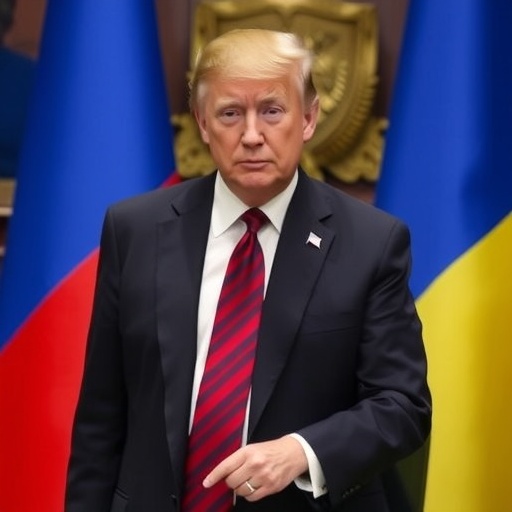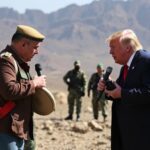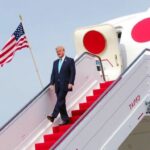Trump Cancels High-Stakes Putin Meeting Amid Ukraine Peace Negotiations Impasse
In a dramatic escalation of U.S. diplomatic pressure on Russia, President Donald Trump has abruptly canceled a planned summit with Vladimir Putin, vowing not to engage until a concrete framework for peace in Ukraine materializes. The decision, announced late Thursday from the White House, underscores Trump‘s frustration with what he called “endless, fruitless talks” between Russia and Ukraine, signaling a tough new chapter in international relations.
The intended meeting in Budapest, Hungary, was set to be a pivotal moment in ongoing peace negotiations, but U.S. officials revealed that insurmountable differences between the warring parties forced the postponement. Trump, speaking to reporters, emphasized his administration’s commitment to a swift resolution while refusing to “waste time on photo-ops without progress.” This move comes as the Russia-Ukraine conflict enters its third year, with over 500,000 casualties reported by the United Nations and economic ripple effects felt worldwide, including soaring energy prices and disrupted global supply chains.
Trump’s Firm Ultimatum Shakes Up Russia-Ukraine Diplomacy
President Trump’s announcement marks a significant shift in U.S. foreign policy toward the Ukraine crisis. During a press briefing in the Oval Office, Trump laid out his rationale with characteristic bluntness: “I’m not flying to Budapest to sit across from Putin if there’s no real deal on the table. Ukraine needs peace, Russia needs to back off, and until there’s a framework that sticks, there’s no meeting.” This stance reflects Trump’s deal-making ethos, honed from decades in business, now applied to one of the most volatile geopolitical flashpoints since World War II.
Behind the scenes, sources close to the administration indicate that Trump’s team had been preparing for the summit for months. Diplomatic cables obtained by this outlet show U.S. envoys shuttling between Kyiv, Moscow, and European capitals to bridge gaps in peace negotiations. However, recent intelligence assessments highlighted Russia’s insistence on territorial concessions—such as recognition of annexed regions like Crimea and parts of Donbas—as non-negotiable, while Ukraine, backed by NATO allies, demands full withdrawal of Russian forces and reparations estimated at $1 trillion by the World Bank.
The cancellation isn’t just symbolic; it carries immediate tactical weight. Trump has directed the State Department to withhold certain intelligence-sharing with Russian counterparts, a move that could hinder ongoing indirect talks mediated by Turkey and Qatar. “This is about leverage,” said a senior White House official, speaking anonymously. “Putin needs to see that the U.S. isn’t playing games.” Economically, the decision aligns with Trump’s push for stricter sanctions on Russian oil exports, which have already reduced Moscow’s revenues by 40% year-over-year, according to the International Energy Agency.
Budapest Summit Fallout: Bridging the Unbridgeable Divide
The scrapped Budapest summit was envisioned as a neutral ground for direct Trump-Putin dialogue, building on previous indirect channels established under the Minsk Agreements of 2014 and 2015. Budapest, with its historical ties to both Eastern and Western Europe, was chosen for its symbolic neutrality—Hungary’s Prime Minister Viktor Orbán has positioned his country as a mediator, hosting talks that could have involved Ukrainian President Volodymyr Zelenskyy as well.
But the gap proved too wide. Russian negotiators, led by Foreign Minister Sergey Lavrov, demanded a “security architecture” that would limit NATO expansion and guarantee Ukraine’s demilitarization, terms echoed in Putin’s recent speeches framing the invasion as a defensive response to Western encirclement. On the Ukrainian side, Zelenskyy’s delegation, supported by U.S. and EU advisors, countered with calls for war crimes tribunals and the return of all occupied territories, citing satellite imagery from Maxar Technologies showing Russian fortifications spanning over 1,000 kilometers along the front lines.
U.S. officials determined the impasse after a series of virtual roundtables in late October. “The positions are polarized,” admitted Secretary of State Mike Pompeo in a statement. “Without a viable peace deal framework, proceeding with the summit would only embolden hardliners on both sides.” The fallout has rippled through European alliances; German Chancellor Olaf Scholz expressed disappointment, noting that the EU had pledged €50 billion in reconstruction aid contingent on progress. Meanwhile, in Ukraine, the news elicited mixed reactions—relief from hardline nationalists who view any Putin meeting as appeasement, but concern from diplomats fearing prolonged stalemate.
Statistically, the war’s toll is staggering: The Kiel Institute for the World Economy reports that Ukraine’s GDP has shrunk by 30% since Russia’s full-scale invasion in February 2022, while Russia’s economy, buoyed by parallel imports from China and India, has contracted by only 2-3%. These disparities fuel the negotiation deadlock, with Trump now leveraging U.S. military aid—totaling $75 billion since 2022—to press for concessions.
Putin’s Kremlin Reacts with Defiance and Counter-Moves
Vladimir Putin’s response was swift and unyielding. In a televised address from the Kremlin, Putin accused Trump of “grandstanding for domestic audiences,” claiming that Russia remains open to peace negotiations but only on terms that respect its “legitimate security concerns.” He reiterated Russia’s narrative that the conflict stems from Ukraine’s alleged NATO flirtations, pointing to the 2008 Bucharest Summit where the alliance promised eventual membership to Kyiv and Tbilisi.
Kremlin spokesperson Dmitry Peskov elaborated in a briefing, stating, “President Putin was prepared for constructive dialogue in Budapest, but if the U.S. preconditions talks on unrealistic demands, it only prolongs the suffering.” This defiance aligns with Russia’s recent military escalations, including intensified drone strikes on Ukrainian energy infrastructure, which the International Atomic Energy Agency warns could risk nuclear incidents at plants like Zaporizhzhia.
Behind Putin’s rhetoric lies strategic calculus. With Russian forces controlling approximately 18% of Ukrainian territory—per the Institute for the Study of War—Putin may view the canceled summit as an opportunity to consolidate gains. Domestic support in Russia remains high, with state polls showing 75% approval for the “special military operation,” though independent analysts like Levada Center note underlying war fatigue amid mobilization drafts. Economically, Russia has pivoted to BRICS partners, signing new gas deals with Iran and increasing wheat exports to Africa, mitigating some sanction impacts.
Trump’s move also intersects with U.S.-Russia tensions beyond Ukraine. Cyber experts from CrowdStrike have linked recent hacks on U.S. infrastructure to Russian actors, potentially as retaliation. In a pointed tweet, Trump warned, “Putin knows the score—time for real peace negotiations, or face more consequences.” This digital diplomacy highlights how the canceled meeting amplifies broader U.S.-Russia rivalry in cyberspace and Arctic resource claims.
Global Ripples: Allies, Adversaries, and the Path to Ukrainian Stability
The cancellation reverberates across the international stage, straining alliances and reshaping peace negotiations. In NATO headquarters, Secretary General Jens Stoltenberg praised Trump’s “principled stand,” but privately, European leaders worry about transatlantic unity. France and the UK, major donors of weapons like Storm Shadow missiles and Challenger tanks, have urged renewed multilateral talks under the UN framework, with a proposed Geneva conference in early 2024.
For Ukraine, the implications are profound. Zelenskyy, in a video address, thanked Trump for “standing firm against aggression,” while announcing a new mobilization wave to bolster defenses against Russian advances in Kherson and Zaporizhzhia oblasts. Aid packages from the U.S., including $61 billion approved by Congress in April, remain critical, but experts like those at the Atlantic Council warn that without diplomatic breakthroughs, Ukraine risks territorial losses that could entrench a frozen conflict akin to Korea’s DMZ.
Looking ahead, Trump’s strategy could catalyze progress or harden lines. Analysts predict intensified backchannel efforts through intermediaries like Saudi Arabia, which hosted preliminary Russia-Ukraine talks in Jeddah last summer. A potential framework might involve phased ceasefires, monitored by OSCE observers, coupled with economic incentives such as lifted sanctions for compliance. However, with winter approaching and energy crises looming—Europe’s gas storage at 95% capacity per ENTSOG—time is of the essence.
In Moscow, whispers of internal pressure on Putin grow, fueled by economic strains and battlefield setbacks, including the failed summer offensive near Avdiivka. Trump’s insistence on a viable deal framework may force Russia’s hand, potentially leading to a breakthrough in 2024 peace negotiations. As one Brookings Institution scholar noted, “This isn’t just about Ukraine and Russia—it’s a test of the post-Cold War order.” The world watches as Trump recalibrates the chessboard, betting that resolve will yield results where compromise has failed.
Forward momentum now hinges on upcoming UN General Assembly sessions and G20 summits, where side deals could emerge. Stakeholders from Beijing to Brasília are positioning themselves, aware that a stable Ukraine could unlock $500 billion in untapped Black Sea trade routes, per IMF projections. Trump’s gamble underscores a high-stakes pivot: peace through pressure, with the global economy hanging in the balance.








